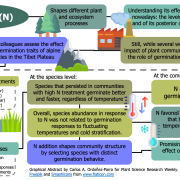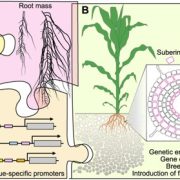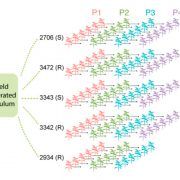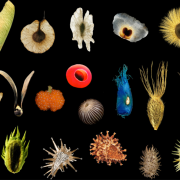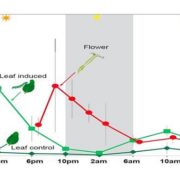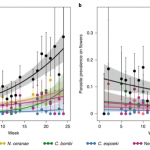Alpine plant growth and reproduction dynamics in a warmer world (New Phytol.)
 Climate warming affects plant performance in warm and dry regions. In cold regions, warming stimulates growth and reproduction, but its effects can vary depending on location and species. Whether herbaceous plants can adapt to increasing temperatures is unclear and a matter of concern. In this study Dolezal et al. investigated the effects of climate warming on different Slovakian populations of the herbaceous plant Rumex alpinus. These plants grow along alpine, subalpine and montane regions in Europe and are consider a good model because they retain past environmental information in their roots and rhizomes, via radial growth rings and annual growth increments respectively. Dolezal et al. tracked environmental influence on plant growth and fitness over 40 years and found that R. alpinus performance was enhanced in warmer climates. Growth of plants in alpine and subalpine regions increase in summer twice as much as 40 years ago and they also produce longer annual rhizomes. In montane regions plant growth increased in spring season. However, such growth and fitness increments appeared to be water-limited, as both growth and flowering were correlated with previous precipitation. Together, these results show that R. alpinus responds rapidly to climate variation and that, while warming temperatures enhanced plant performance, this depends on rain fall which can become limiting as the climate warms. Such observations show a complex response of alpine populations to climate warming and its vulnerability and sensitivity to water shortage. (Summary by Daniela Ramos @DanielaR_cruz) New Phytol. 10.1111/nph.16790
Climate warming affects plant performance in warm and dry regions. In cold regions, warming stimulates growth and reproduction, but its effects can vary depending on location and species. Whether herbaceous plants can adapt to increasing temperatures is unclear and a matter of concern. In this study Dolezal et al. investigated the effects of climate warming on different Slovakian populations of the herbaceous plant Rumex alpinus. These plants grow along alpine, subalpine and montane regions in Europe and are consider a good model because they retain past environmental information in their roots and rhizomes, via radial growth rings and annual growth increments respectively. Dolezal et al. tracked environmental influence on plant growth and fitness over 40 years and found that R. alpinus performance was enhanced in warmer climates. Growth of plants in alpine and subalpine regions increase in summer twice as much as 40 years ago and they also produce longer annual rhizomes. In montane regions plant growth increased in spring season. However, such growth and fitness increments appeared to be water-limited, as both growth and flowering were correlated with previous precipitation. Together, these results show that R. alpinus responds rapidly to climate variation and that, while warming temperatures enhanced plant performance, this depends on rain fall which can become limiting as the climate warms. Such observations show a complex response of alpine populations to climate warming and its vulnerability and sensitivity to water shortage. (Summary by Daniela Ramos @DanielaR_cruz) New Phytol. 10.1111/nph.16790


